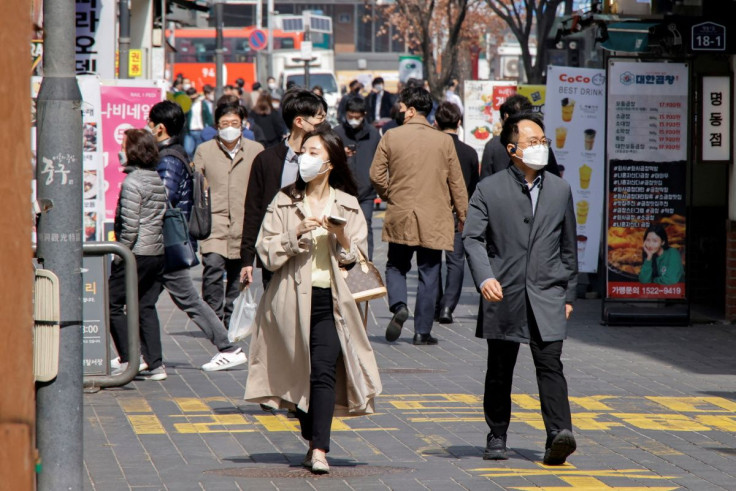Telemedicine Booms In S.Korea Amid COVID, President-elect Yoon Backs Practice

Kim Jin-woo, a 27-year old resident of Seoul battling COVID-19 and recovering at home under a new government policy, needed to see a doctor when his symptoms did not improve, but the nearest designated hospital was fully booked. So he picked up his phone.
Like Kim, many have turned to telemedicine in South Korea in recent weeks as access to in-person options have been hit after authorities said they would only provide care to COVID patients aged 60 and above amid record high Omicron cases and prescribed home care for those with mild symptoms.
While telemedicine is technically illegal in South Korea and has only been allowed under emergency COVID measures since 2020, the increase in its users and support from President-elect Yoon Suk-yeol who sees it as an "inevitable reality" suggest it may remain part of the healthcare system.
"It was really convenient to get treatment via a phone call and have drugs delivered through a single process. I wish this can be expanded even after COVID ends," Kim said. "Making a trip to the hospital can be burdensome when you're ill."
The closest hospital designated for COVID home care patients that Kim can go to is an hour away by foot, but it only provides such treatment on Monday and Tuesday and is currently fully booked for the week.
A total 2 million people are under home care for COVID in the country. While there are two doctors per 1,000 people on average in South Korea, only six of 17 cities and provinces meet the average, showing how health care is thinner in many parts.
This gap in traditional in-person services has driven up business for local telemedicine players, like Doctor Now, Ollacare, Soldoc and Dr.Call, that help connect hospitals to patients located tens and hundreds of kilometres away.
Doctor Now, a SoftBank Ventures-backed startup, said it has seen a surge in users, mostly in their 20s and 30s, with COVID consultations now making up above half of total cases.
Of its cumulative 2.3 million users since December 2020, nearly a million patients have signed up for treatment in February this year, a 40-fold jump from a year earlier.
Other players have also seen a pick up in users.
But telemedicine providers are few in South Korea, leading to long virtual queues. Kim, for example, had to wait three hours to get a phone call from a doctor.
"Although I had to wait hours in the virtual queue, still that's better than not being able to receive any treatment ... and I've got tonnes of work to do, which means I still wouldn't have made it to the hospital," Kim told Reuters.
YOON SUPPORTS TELEMEDICINE
President-elect Yoon, who takes office in May, has vowed to "make sure all Korean citizens can enjoy telemedicine", fuelling hopes that the practice may become a permanent part of South Korea's $203 billion health industry.
For now, telemedicine is in its infancy, providing only about 58 billion won ($48 million) worth of treatments over the past two years, health ministry data showed.
In North America, a global frontrunner in the industry, the telemedicine market stood at $57.26 billion in 2020 alone, according to data from Fortune Business Insights.
It expects the global telemedicine market to reach about $264 billion by 2028, from about $127 billion in 2020.
For decades, the Korean Medical Association has opposed telemedicine on worries about misdiagnosis and misuse of drugs.
But the medical community is gradually embracing the trend given evidence that telemedicine can help reduce medical service gaps between urban and rural areas.
"At first, I thought it would be a bit awkward and difficult ... but it turns out to be more satisfying to both the doctor and the patient," said Han Jae-hyuk, a paediatrician at The Bareun Yonsei Clinic in Seoul.
"Telemedicine is essential in many ways, especially for those who are not in a position to visit hospitals or need to get a prescription refilled for chronic diseases."
($1 = 1,211.9800 won)
© Copyright Thomson Reuters 2024. All rights reserved.







